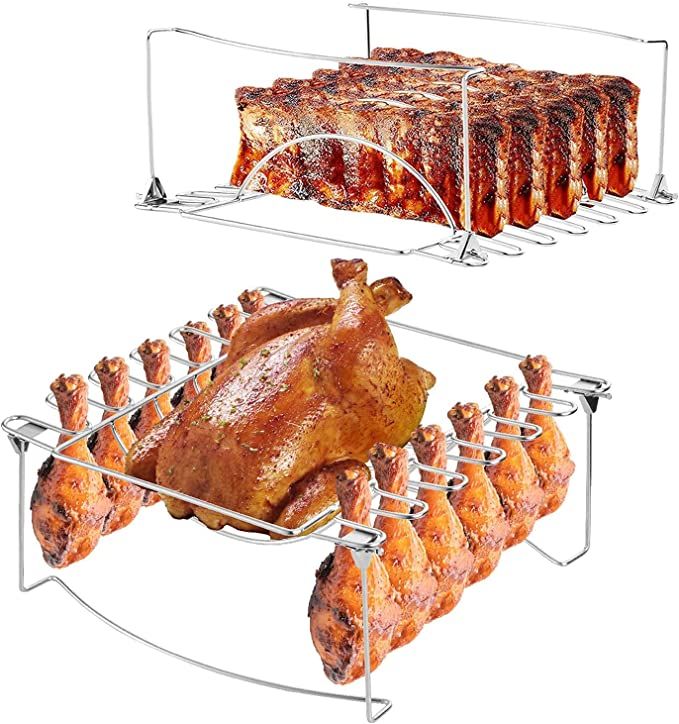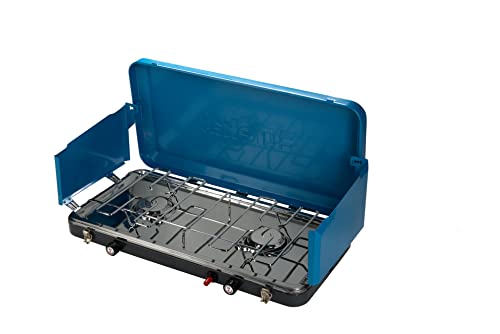
Brief overview of grilling chicken thighs on a gas grill
Grilling chicken thighs on a gas grill is a simple yet delicious way to enjoy a flavorful, juicy, and tender meal. With the convenience and precise temperature control offered by a gas grill, you can achieve perfectly cooked chicken thighs that are sure to impress your family and friends. This guide will walk you through the entire process, from preparation to grilling, ensuring that you end up with mouthwatering results.
Benefits of using chicken thighs for grilling
Chicken thighs are an excellent choice for grilling due to their rich flavor, succulent texture, and relatively low cost compared to other cuts of chicken. The higher fat content in chicken thighs ensures that the meat remains moist and tender, even when exposed to the high heat of the grill. Additionally, chicken thighs are versatile and can be seasoned or marinated in a variety of ways, allowing you to explore different flavors and cuisines.
Importance of proper grilling techniques for optimal taste and safety
Using proper grilling techniques is crucial for achieving the best taste and texture in your grilled chicken thighs. It also ensures that the meat is cooked safely, reaching the correct internal temperature to eliminate any potential foodborne illnesses. By following the outlined steps and tips, you can master the art of grilling chicken thighs on a gas grill, resulting in a delicious and satisfying meal every time.
Choosing quality chicken thighs
Skin-on vs skinless
When selecting chicken thighs for grilling, you can choose between skin-on or skinless varieties. Skin-on thighs tend to be more flavorful and juicy, as the skin helps to retain moisture during the cooking process. However, skinless thighs can be a healthier option with less fat content, while still providing a tender and moist result.
Bone-in vs boneless
Both bone-in and boneless chicken thighs can be successfully grilled. Bone-in thighs typically take a bit longer to cook but often yield a richer flavor, as the bones help to retain moisture and add depth to the taste. Boneless thighs are more convenient, cook faster, and can be easier to eat, making them a popular choice for those seeking a quicker grilling experience.
Marinating and seasoning
Creating the perfect marinade
A marinade can greatly enhance the flavor of your grilled chicken thighs. Choose a marinade that complements the natural taste of the chicken and includes ingredients like oil, acid (such as vinegar or citrus juice), and a variety of herbs and spices. Popular marinade options include barbecue, teriyaki, lemon-herb, or spicy buffalo.
Dry rub options
If you prefer not to marinate your chicken thighs, you can use a dry rub instead. A dry rub is a blend of herbs, spices, and seasonings that is applied directly to the surface of the meat. Some popular dry rub options include a simple salt and pepper mix, Cajun seasoning, or a smoky barbecue rub.
Duration of marinating
For optimal flavor penetration, marinate your chicken thighs for at least 30 minutes, but no longer than 24 hours. Longer marinating times may lead to mushy or overly tenderized meat. For dry rubs, you can apply the seasoning right before grilling or allow the thighs to rest in the refrigerator for a few hours to deepen the flavor.
Preparing the gas grill
Cleaning the grill grates
Before grilling your chicken thighs, it's important to clean the grill grates to remove any residue or debris. This will help prevent the meat from sticking and ensure that you achieve a nice sear. Use a grill brush to scrub the grates while they're still warm or soak them in soapy water for easier cleaning.
Preheating the grill
Preheat your gas grill to a medium-high heat, around 400°F (205°C), for at least 10-15 minutes before placing your chicken thighs on the grates. This will help achieve a proper sear and create those desirable grill marks on the meat.
Setting the appropriate temperature
Maintaining the correct temperature throughout the grilling process is crucial for evenly cooked and tender chicken thighs. For most recipes, a medium-high heat (around 400°F or 205°C) will provide the optimal cooking environment. However, if you're using a particularly sweet marinade or glaze, you may need to reduce the heat slightly to prevent burning.
Placing chicken thighs on the grill
Proper placement for even cooking
To ensure even cooking, place the chicken thighs on the grill grates with enough space between each piece to allow for proper heat circulation. Avoid overcrowding the grill, as this can lead to uneven cooking and make it difficult to flip the thighs.
Skin-side down vs skin-side up
Start grilling the chicken thighs with the skin-side down, allowing the skin to become crispy and golden brown. This will also help render some of the fat, making the skin more flavorful and enjoyable to eat.
Cooking times and temperatures
Recommended cooking times for different types of chicken thighs
Bone-in, skin-on chicken thighs typically take 10-12 minutes per side, while boneless, skinless thighs may take 6-8 minutes per side. However, these times can vary depending on the thickness of the meat and the heat of your grill.
Importance of using a meat thermometer
To ensure your chicken thighs are cooked to perfection and safe to eat, it is essential to use a meat thermometer. This will help you accurately determine when the meat has reached the appropriate internal temperature, avoiding undercooked or overcooked chicken.
Safe internal temperature for chicken
The safe internal temperature for cooked chicken is 165°F (74°C). Insert the meat thermometer into the thickest part of the thigh without touching the bone to get an accurate reading.
Flipping and basting
When to flip the chicken thighs
Flip the chicken thighs when they have developed a nice sear and are easily released from the grill grates. This usually occurs after the first 10-12 minutes for bone-in, skin-on thighs or 6-8 minutes for boneless, skinless thighs.
Techniques for basting and glazing
If you are using a glaze or sauce, baste the chicken thighs during the last few minutes of grilling to prevent burning. Use a basting brush or spoon to apply the sauce evenly over the thighs and allow it to caramelize on the grill.
Preventing flare-ups
Flare-ups can occur when excess fat drips onto the flames, causing sudden bursts of fire. To prevent flare-ups, trim any excess fat from the chicken thighs before grilling and maintain a clean grill. If flare-ups do occur, temporarily move the chicken thighs to a cooler part of the grill until the flames subside.
Resting the chicken thighs
Importance of allowing the meat to rest
Allowing the chicken thighs to rest after grilling is crucial for achieving a juicy and tender result. Resting the meat allows the juices to redistribute evenly throughout the chicken, ensuring that every bite is moist and flavorful.
Duration of resting time
Let the grilled chicken thighs rest for approximately 5-10 minutes before serving. You can loosely cover them with aluminum foil to retain warmth during the resting period.
Optional garnishes and presentation
Adding fresh herbs or sauces
Elevate the flavor and appearance of your grilled chicken thighs by adding fresh herbs or sauces. Some popular options include chopped cilantro, parsley, or basil, as well as drizzling a complementary sauce like barbecue, teriyaki, or chimichurri over the meat.
Plating ideas for an attractive presentation
Arrange the chicken thighs on a serving platter or individual plates in a visually appealing manner. You can place the thighs on a bed of greens or roasted vegetables for added color and texture. Consider garnishing the dish with a sprinkling of fresh herbs or a side of sauce for dipping.
Addressing common grilling challenges
Uneven cooking
To prevent uneven cooking, make sure to place the chicken thighs on the grill with ample space between them for proper heat circulation. Rotate the thighs during cooking if you notice that certain areas of the grill are hotter than others.
Dry or overcooked chicken
Avoid overcooking the chicken thighs by using a meat thermometer to monitor the internal temperature. Remember that the safe internal temperature for chicken is 165°F (74°C). Additionally, marinating or using a dry rub can help retain moisture in the meat.
Flare-ups and burning
To prevent flare-ups and burning, trim excess fat from the chicken thighs before grilling and keep the grill clean. If flare-ups occur, move the chicken to a cooler part of the grill until the flames subside. When using a sweet marinade or glaze, apply it towards the end of cooking to prevent burning.
Tips for perfect grilled chicken thighs every time
Monitoring the heat
Maintain a consistent heat level throughout the grilling process. Preheat the grill to the proper temperature (medium-high heat, around 400°F or 205°C) and adjust the heat as needed during cooking to avoid burning or undercooking.
Using a quality meat thermometer
Invest in a reliable meat thermometer to ensure that your chicken thighs are cooked to the correct internal temperature. This will help you avoid undercooked or overcooked chicken and ensure a safe and delicious meal.
Experimenting with different marinades and rubs
Don't be afraid to try out various marinades and dry rubs to find the perfect flavor combination for your grilled chicken thighs. This will allow you to enjoy a wide range of tastes and cuisines, making each grilling experience unique and enjoyable.
 (1).png)












